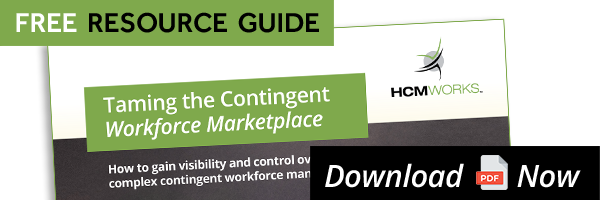Staffing vendors play a key role in ensuring your company has the resources it needs to complete a project. Used properly, they help your business acquire talented workers, at the right time and the right price.
Managing multiple staffing vendors, however, is complex. It takes a team of experts and a large amount of resources to ensure your contingent workforce strategy is unified across your entire organization and successfully lined up to your overall business goals.
In fact, implementing a contingent workforce strategy into your company is an essential aspect of ensuring you don't overpay for non-permanent workers. Here are three tips that will help you better manage staffing vendors and ensure you pay fair market rates for contingent workers.
1 - Know the key players
Many people in your company are involved in working with staffing vendors. Project Managers, HR Managers, Procurement Leaders, and Vendor Management Officers (VMO) all play a part, and they all want a piece of the recognition when great staff come aboard.
Project Managers define what needs to be done and send this information to HR. Human Resources is in charge of making sure that people acquired from the vendor meet the policies of the company in regards to human capital and worker experience. All of this falls to the Procurement Leader, who makes the actual staffing decisions. They are the ones responsible for which staffing agency your company uses, as well as selecting the individual employees. The VMO’s tasks range from ensuring internal policies run efficiently and with low cost, then shift towards candidate quality, customer service, and policy compliance as the business grows.
All of these people working on the staffing vendor front can create tension, with each department having a different idea of how to go about acquiring employees.
The first step to any successful contingent workforce management strategy that ensures you are paying fair market rates is to unify your entire approach to hiring non-employee workers. Make sure that each department is unified in their approach to contingent workers, and that they know the requirements in terms of candidate quality, spend etc.
2 - Research and specialization
There are dozens of staffing vendors for your company to choose to hire from, and nearly all of them are specialized in providing workers for specific roles and industries. Finding the correct vendor to work with is a key part of ensuring fair market rates.
Shop around as much as you can, and choose a vendor that supplies employees that are suited to the level of expertise you need. Hiring someone that is more skilled than your task calls for generally comes with a higher pay rate and possibly more markup from the staffing vendor as well. Take as much time as possible, as choosing the right vendor to partner with will save you time, money, and headaches in the future. Don’t be afraid to ask questions to make sure you get the staff you need while keeping costs down.
In the end the best way to avoid overpaying for staffing vendors is to learn all you can before committing to a contract. Knowing not only the pay rate of the employee, but also the cut the vendor takes, as well as expected benefits and bonuses, will prevent nasty surprises in the future and help create a mutually beneficial relationship between you and the vendor.
3 - Implement a vendor management solution (VMS)
You may not even know how many staffing vendors you have, how many contingent workers you have, or how much they are costing you. How can you ensure vendor compliance, fair market rates, and proper classification if you have no visibility and control over your workforce?
Without an effective system in place, you won’t be able to identify possible rogue spend, much less reduce it. A vendor management solution (VMS) will help you gain visibility over your contingent workforce, ensuring that you pay fair market rates and better manage your company’s labor spend.
Not only that, but a VMS will also help you automate and streamline the critical processes that support the sourcing, acquisition, management and payment of your on-demand workforce. This results in cost savings, improved visibility and transparency, better access to high-quality talent, reduced compliance risk, greater operational efficiencies and many other benefits.
HCMWorks is a technology-neutral contingent workforce advisory expert that has years’ of experience helping companies implement the right VMS technology based on the unique needs of their non-employee workforce. Want to learn more about how we can help? Contact us today.




